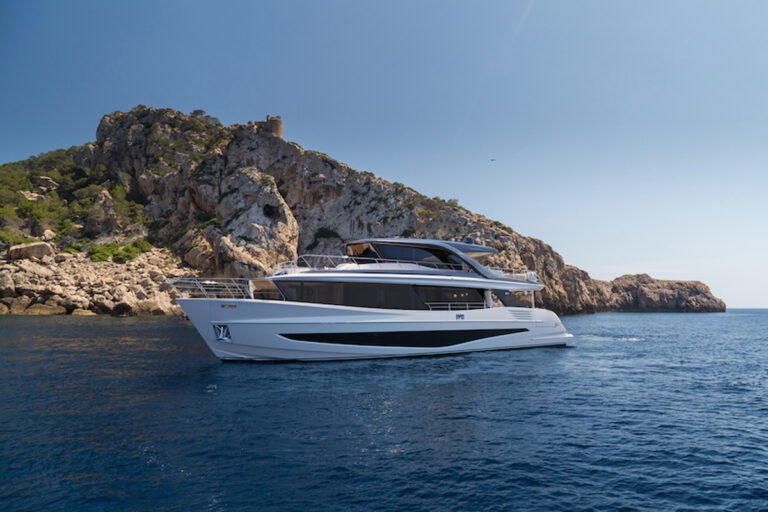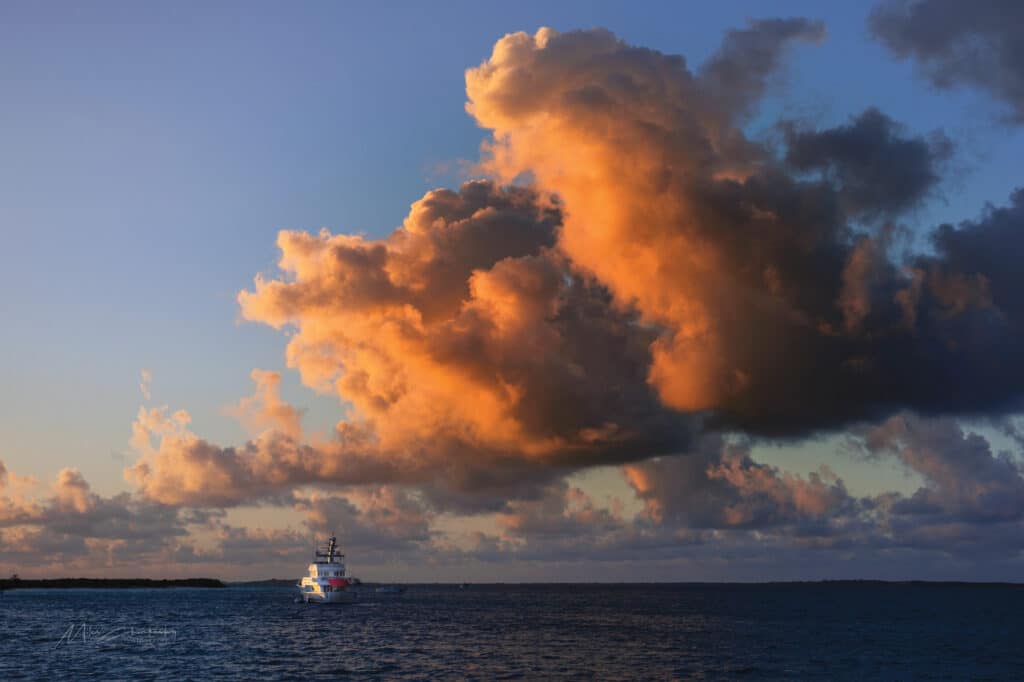
If Mother Nature had been less obstinate, Miles Cherkasky might have continued to sail.
“I’ve been sailing since I was probably 14 years old, almost half a century of sailing,” he says, now in his 60s. “One day, I was doing a delivery from Baltimore down to Miami Beach where we have a slip, and there was no wind, and I was sitting there listening to my engine run, and I couldn’t go anywhere, and I thought, ‘This is stupid. Time to get a trawler.’”
But what kind of trawler? He and his wife, Laureen, knew they liked longer-distance, offshore cruising—after Miles retired back in 2007, they bought a 47-foot high-performance sailboat and cruised it from Nova Scotia to the Bahamas a few times—but they weren’t quite sure how to achieve a good cruising experience in a powerboat. That is, until the day Miles helped with the delivery of an Outer Reef.
“When they came out of the inlet, Miles was putting away his cup of coffee, getting ready, thinking there were going to be all these waves and it would be sloppy, but nobody around him was moving or getting prepared for these big seas,” Laureen recalls. “The ride was like glass. When he came home that day, he said, ‘We have to get an Outer Reef.’”
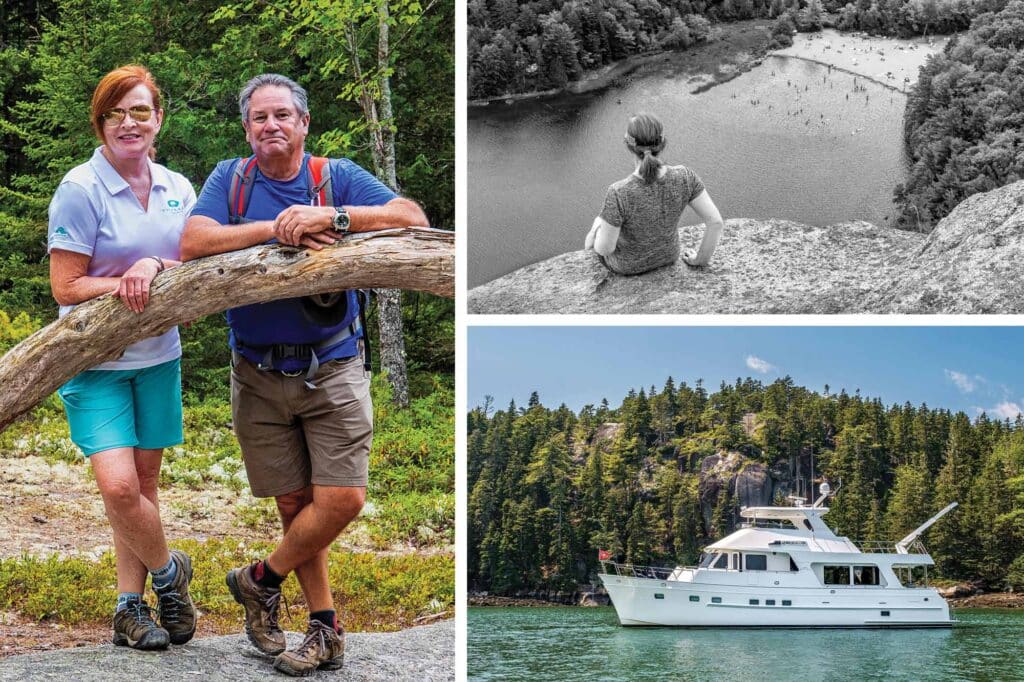
Just like that, the Cherkaskys became members of a club that has grown almost exponentially in recent years, as an increasing number of boaters realize they can live their long-distance cruising dreams with the kinds of creature comforts that used to be limited to land. Today’s offshore-capable power yachts for cruising couples and families, built by companies such as Outer Reef, Nordhavn and Kadey-Krogen, are being built for go-anywhere adventure. They’re also being outfitted for the specific types of adventures that owners want to undertake.
“These boats are not marina queens,” says Jeff Druek, president and CEO of Outer Reef. “We talk a lot about equipment on board, things like inverters, solar panels, how many generators, what size generators, what type of air conditioning—things of that nature. Every piece of equipment in the boat is talked about, in terms of how they plan to use their boat, how far they’re going to go afield, how long they’re going to be away from the dock and where they’re going to be cruising.”
“I’m at the point now where I don’t have to do the five- or six-day-a-week grind, and that allows the flexibility to travel a bit farther.”
— John Ellis, Owner, Nordhavn 68 “Dragon”
Nordhavn President Dan Streech says the way today’s bluewater hulls are being built and outfitted is making adventure cruising a real option for people who just a couple of decades ago would have feared it. The kinds of discomfort and danger that used to be part and parcel of crossing oceans are now minimized by modern construction, communication tools and redundant systems, so much so that all kinds of people feel comfortable cruising far and wide.
“You’re seeing normal people who in no way would’ve been sailboat material 35 years ago,” Streech says. “They have the chart plotters and Starlink. They’re sitting on the open ocean doing Facetime with their grandchildren. They’re not disconnecting from the world. It’s not necessary to have physical sacrifices or the emotional trauma of cutting themselves off. They have washers and dryers, wine coolers, TV, communication as they’re heading down to the South Pacific, and they are part of a huge social network, even just inside the Nordhavn world. We have 600 boats. The owners’ group—there are probably 20, 30, 40 posts a day with people who have a question. That feeling of isolation is gone.”
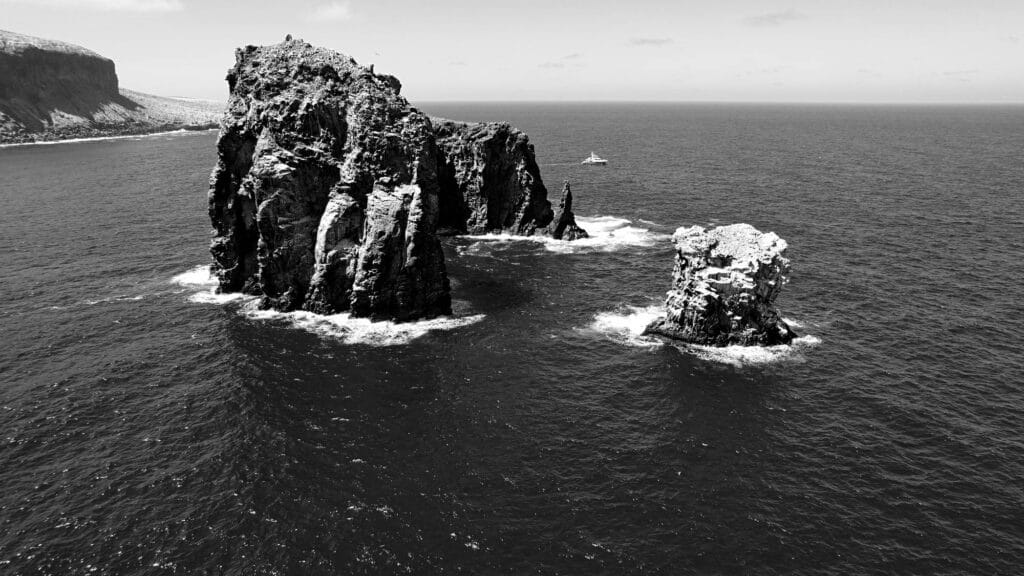
John Ellis took delivery of his Nordhavn 68, Dragon, in 2021 with a vision of following in his parents’ wake, only in a less-stressful way.
“I have a lot of sailing experience. My parents were cruisers,” Ellis says. “I spent time on board with them in the South Pacific. I’ve been on long passages with slanted decks. That wasn’t really what I was looking for. I loved those years—they were wonderful—but I’m looking for a different experience.”
A big part of the offshore powerboat experience for Ellis is fishing, so he customized his Nordhavn with extra bait tanks and rod stowage, along with two Seakeepers: an SK9 and an SK16. “When we stop and we’re fishing in the open ocean, we need to keep the motion down on the boat,” Ellis says. “The ocean has a tendency to want to rearrange the furniture on these big boats. Now, we tap a button, and it’s just as solid and stable as it can be. Nobody’s mad at me, and nothing’s breaking. No plates are crashing inside.”
That change in the way bluewater boats are built, Streech says, is also changing the profile of offshore cruisers. Back in the day, the typical Nordhavn customer was a husband who wanted to point the bow offshore and a wife being dragged along for the white-knuckle ride. Not so today, Streech says: “Just a shower alone was a luxury 35 years ago, and now you’re standing in a stone shower with gorgeous fixtures and a heated towel bar. What we’re seeing more and more is teamwork. A couple comes in, and she’s not looking at her phone half-mad because they just had a fight in the car. Not at all. She’s right there on the team and leading it sometimes. She has deduced that this is a path where they can share something, have an adventure and travel the world.”
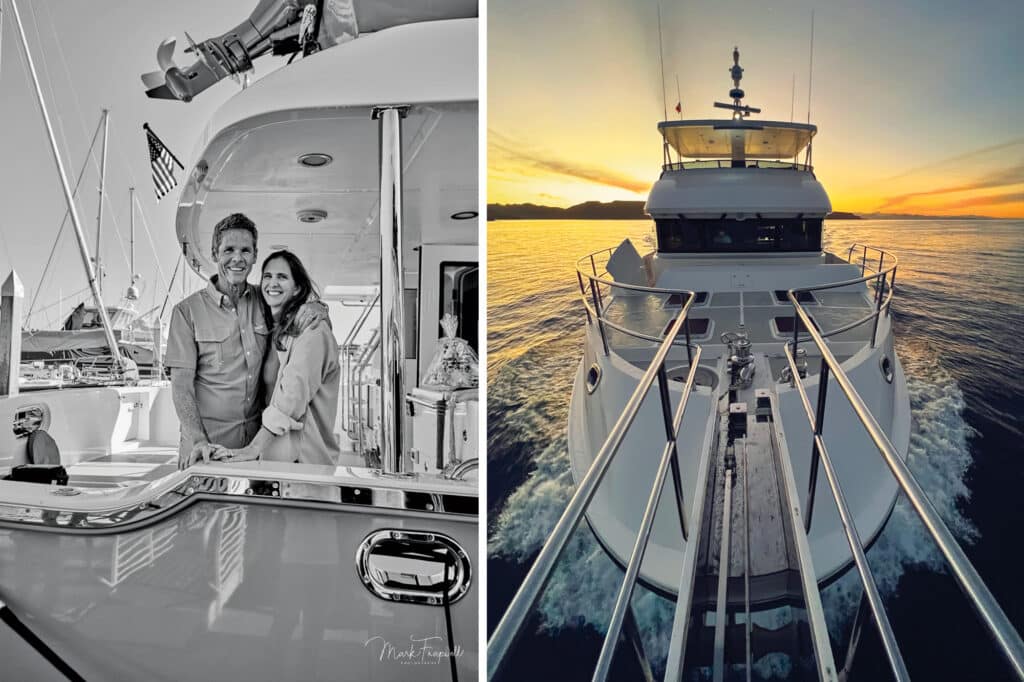
Ellis says that’s exactly the plan that he and his wife share, now that both their kids are off to college. Their intent is to complete a 10-year circumnavigation.
“We’re going to go to the Caribbean and then come up the Eastern Seaboard, then go up to Nova Scotia, then back down to Florida after hurricane season next year, then Bermuda to the Azores, then get to Portugal and figure out whether we want to go up the Thames for fish and chips or whether we want to go around the corner to France,” he says. “It’s inevitable that we’re going to do both. My wife wants to do all the things, and we’re super happy with all the confidence we’ve been able to build aboard the boat so far.”
Sandy Peretsman says it was actually his wife’s idea to buy the Kadey-Krogen 48 that they named Third Child. She’s still winding down her career, but he retired this past January and started thinking harder about what comes next. They’d always had smaller boats and chartered larger ones in destinations such as the British Virgin Islands; he wanted them to have a bluewater-capable boat of their own, one that would let them do more as owner-operators. “My wife pushed me to do this a few years ago when I was turning 60,” Peretsman recalls, adding that his wife told him, “You don’t want to be one of those people who say, ‘I’m going to do it,’ and you don’t.”
So, they’re doing it. They base Third Child out of Charleston, South Carolina. So far, they’ve gone as far south as the Bahamas, and they’re thinking about heading up to New England, as well as cruising farther south into the Caribbean, as they become more comfortable aboard. “You can island-hop your way all the way to the Virgin Islands without ever driving more than 200 miles at a time, and we already drive that along the East Coast,” he says. “My personal preference is offshore because there’s a lot less traffic. It’s more relaxing. You don’t have to worry about how deep the ocean is or running aground, or boats passing you and crossing you. It’s just a big, blue patch, so you can go where you want, as you want.”
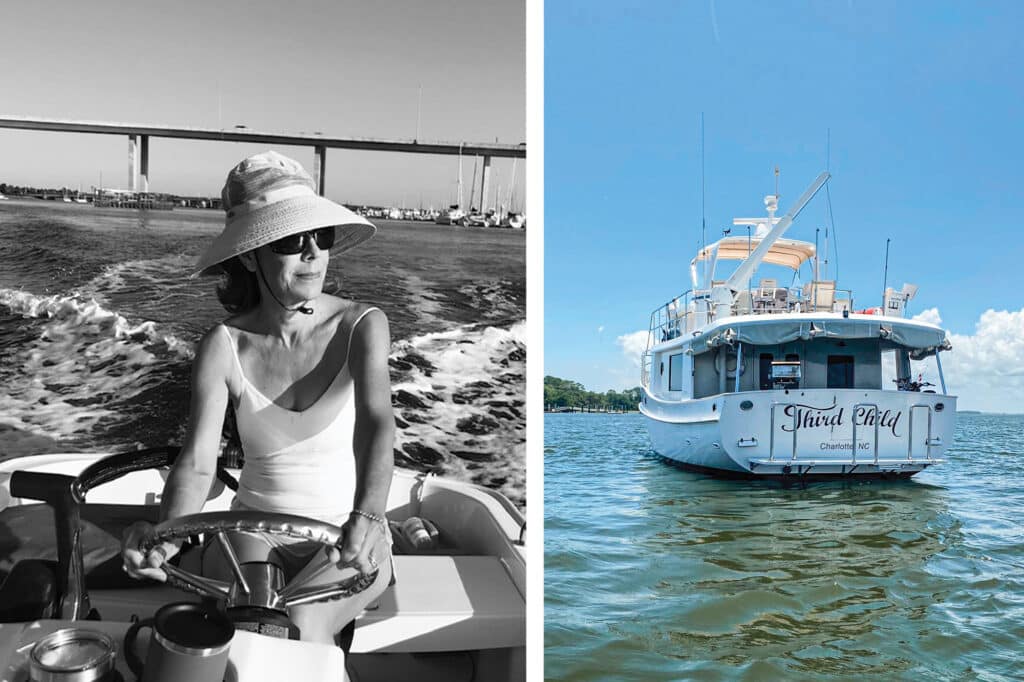
The more time he spends running his Kadey-Krogen, Peretsman says, the more he’s thinking about increasing his cruising distances. “I can go from Charleston to Europe and most of the way back on one tank of gas,” he says. “These boats will go 4,000 or 5,000 miles on a single tank of fuel. It doesn’t suit everybody, but if you want to be out there, it’s a wonderful boat for it.”
Streech says that for Nordhavn owners, ocean crossings aren’t even big news anymore. The company has had 13 boats complete circumnavigations so far; one of them did it three times. Over at Outer Reef, Druek says, so many people want to cruise off the beaten track that the resale value of the bluewater-capable boats stays high. Some of them, he says, he’s resold eight or 10 times.
It’s a testament to how far powerboat building has come that adventures so impressive are increasingly common. “To the Marquesas, that’s 3,000 miles,” Streech says. “It’s shocking, it’s mind-numbing that if you looked down from an airplane, you probably couldn’t even see the boat, and these boats make it. They do it over and over and over again.”
The Core Elements
Nordhavn President Dan Streech says that for distance cruising, “there are basics that have to be adhered to in terms of stability, structure, fuel capacity, fuel handling. All those things need to be there. They don’t get talked about that much anymore. They’re a given for us now at Nordhavn.”
Having It All on Board
Production Manager Fran Morey says Kadey-Krogen owners typically stay on board at least six months each year. “They want everything that’s the latest and greatest, and they also want the creature comforts of home,” he says.








